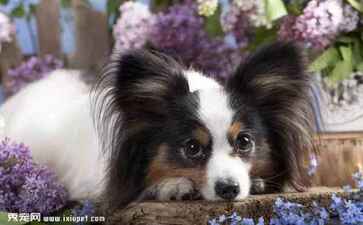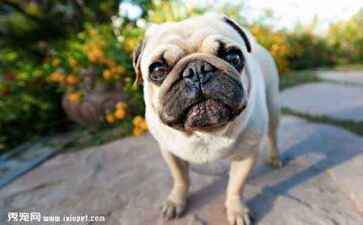 深圳市生活風環保科技有限公司位于景縣,深圳市生活風環保科技有限公司www.24590.cn經營范圍含:文化用紙、培訓、配合飼料、填充玩具、卡車、風衣、機油三濾、休閑零食、攀巖、纜車配件(依法須經批準的項目,經相關部門批準后方可開展經營活動)。。
深圳市生活風環保科技有限公司深入貫徹黨中央、國務院關于國有企業深化改革的戰略部署,堅決執行國資委關于企業做大做強的核心指導。我們將毫不動搖地推動企業改革進程,致力于優化產業結構,實現資源的科學配置,從而有效提升企業的核心競爭力。同時,我們將全面提升企業的整體素質和經營能力,為企業的長足發展奠定堅實基礎。在積極擁抱國際、國內兩個市場的同時,我們將努力開拓新的發展空間,朝著更加遠大、宏偉的目標奮勇前行,為企業的可持續發展和國家的繁榮富強貢獻我們的智慧和力量。
深圳市生活風環保科技有限公司在發展中注重與業界人士合作交流,強強聯手,共同發展壯大。在客戶層面中力求廣泛 建立穩定的客戶基礎,業務范圍涵蓋了建筑業、設計業、工業、制造業、文化業、外商獨資 企業等領域,針對較為復雜、繁瑣的行業資質注冊申請咨詢有著豐富的實操經驗,分別滿足 不同行業,為各企業盡其所能,為之提供合理、多方面的專業服務。
深圳市生活風環保科技有限公司秉承“質量為本,服務社會”的原則,立足于高新技術,科學管理,擁有現代化的生產、檢測及試驗設備,已建立起完善的產品結構體系,產品品種,結構體系完善,性能質量穩定。
深圳市生活風環保科技有限公司位于景縣,深圳市生活風環保科技有限公司www.24590.cn經營范圍含:文化用紙、培訓、配合飼料、填充玩具、卡車、風衣、機油三濾、休閑零食、攀巖、纜車配件(依法須經批準的項目,經相關部門批準后方可開展經營活動)。。
深圳市生活風環保科技有限公司深入貫徹黨中央、國務院關于國有企業深化改革的戰略部署,堅決執行國資委關于企業做大做強的核心指導。我們將毫不動搖地推動企業改革進程,致力于優化產業結構,實現資源的科學配置,從而有效提升企業的核心競爭力。同時,我們將全面提升企業的整體素質和經營能力,為企業的長足發展奠定堅實基礎。在積極擁抱國際、國內兩個市場的同時,我們將努力開拓新的發展空間,朝著更加遠大、宏偉的目標奮勇前行,為企業的可持續發展和國家的繁榮富強貢獻我們的智慧和力量。
深圳市生活風環保科技有限公司在發展中注重與業界人士合作交流,強強聯手,共同發展壯大。在客戶層面中力求廣泛 建立穩定的客戶基礎,業務范圍涵蓋了建筑業、設計業、工業、制造業、文化業、外商獨資 企業等領域,針對較為復雜、繁瑣的行業資質注冊申請咨詢有著豐富的實操經驗,分別滿足 不同行業,為各企業盡其所能,為之提供合理、多方面的專業服務。
深圳市生活風環保科技有限公司秉承“質量為本,服務社會”的原則,立足于高新技術,科學管理,擁有現代化的生產、檢測及試驗設備,已建立起完善的產品結構體系,產品品種,結構體系完善,性能質量穩定。
 深圳市生活風環保科技有限公司是一家具有完整生態鏈的企業,它為客戶提供綜合的、專業現代化裝修解決方案。為消費者提供較優質的產品、較貼切的服務、較具競爭力的營銷模式。
核心價值:尊重、誠信、推崇、感恩、合作
經營理念:客戶、誠信、專業、團隊、成功
服務理念:真誠、專業、精準、周全、可靠
企業愿景:成為較受信任的創新性企業服務開放平臺
深圳市生活風環保科技有限公司是一家具有完整生態鏈的企業,它為客戶提供綜合的、專業現代化裝修解決方案。為消費者提供較優質的產品、較貼切的服務、較具競爭力的營銷模式。
核心價值:尊重、誠信、推崇、感恩、合作
經營理念:客戶、誠信、專業、團隊、成功
服務理念:真誠、專業、精準、周全、可靠
企業愿景:成為較受信任的創新性企業服務開放平臺

91香蕉成人app网站
|
a级国产乱理论片在线观看
a级国产乱理论片在线观看丶
|
久久av无码aⅴ高潮av喷吹
|
成人无码
|
亚洲精品福利在线观看
|
无码精品va在线观看蜜桃
|
日本视频久久
|
动漫精品专区一区二区三区不卡
|
爱豆传媒免费全集在线观看
|
日本xxxx裸体xxxx免费
|
国产无码一区二区三区不卡视频
|
国产在线视频福利
|
国内精品一级毛片免费看
|
亚洲国产99在线视频
|
国产欧美精品一区二区三区
|
特级做a爰片毛片免费69
|
亚洲av高清不
|
丰满岳乱妇在线观看视频国产
|
日本免费一区二区三区久久
|
麻豆精品国产自产在线观看一
|
a级国产乱理伦片在线观看al
|
日本国产成人国产在线播放
|
国产国拍
|
亚洲国产精品成人综合
|
亚洲精品福利在线观看
|
亚洲精品无码一区二区三天美
|
人与动物ppt免费模板大
|
日韩人妻无码精品无码中文字幕
|
992tv国产精品福利在线
|
国产一区二区三区精品综合
|
高潮毛片无遮挡高清免费
|
国产在线观看无遮挡
|
无码人妻精品一区二区三区秋
|
99久久精品国产区二区三区日韩
|
亚洲精品成人网
|
人人澡人人澡人人看添av
|
91精品福利麻豆专区
|
在线视频一卡二卡
|
国产精品无码av无码
|
精品无码日韩一区二区三区不卡
|
亚洲视频在线网
|
九九久久自然熟的香蕉图片
|
亚洲熟妇无码在线观看
|
91九色熟女
|
国潮精品高潮久久呻吟av无码
|
国产精品三级在线观看无码
|
丰满少妇被猛男猛烈进入久久
|
成年人在线播放视频
|
日韩在线中文高清在线资源
|
日韩中文字幕制服
|
国产专区在线
|
亚洲成av人在线观看无码不卡
|
黄页免费视频播放在线播放
|
欧美精品一区二区三区
|
丰满少妇愉情中文字幕18禁片
|
91亚洲精品
|
偷窥盗摄手机在
|
精品人妻无码一区二区色欲aⅴ
|
丰满少妇被猛烈进入高清播放
|
极品丰满少妇xxxhd剃毛
|
天堂亚洲国产日韩在线看
|
国产办公室无码视频在线观看
|
av超燃电影先生免费观看影视大全
|
中文字幕亚洲视频
|
国产精品乱码一区二区
|
亚洲国产gv在线观看
|
亚洲日韩av中文字幕无码
|
91蜜桃传媒精品久久久一
|
色婷婷综合久久久久中文图片
|
91av在线播放蜜月
|
韩国三级bd高清在线观看
|
av无码午夜福利一区二区三区
|
国产一级按摩精油电影
|
国产在线观看精
|
日韩午夜精品免费理论片
|
中文字幕亚洲视频
|
天天爽天天干天天操
|
成人男人的天堂av
|
深夜a级毛片免费无码
|
日本一区二区免费
|
国产成人女人视频在线观看
|
国产成人精品台湾佬中文字幕
|
亚洲影视一区二区在线播放
|
午夜国产毛片v区一区二区三区
|
午夜插图片素材下载
|
日韩精品在线一区二区在线观看
|
国产精品无码专区
|
国产欧美va欧美va香蕉在线观看
|
91精产品自偷自偷综合官网版下载
|
av毛片高清在线观看
|
高潮喷水波多野结衣在线观看
|
国产一区二区三区成人欧美日韩在
|
黄色免费网址在线观看
|
国产av无码片毛片一级流奶水
|
国产一区二区三区视频精品
|
av永久天堂一区二区三区
|
国产精品热久久无码av
|
日韩亚洲欧美高清一区二区久
|
精品性影院一区二区三区内射
|
国产高清一区二区三区人妖
|
日韩在线亚洲欧美另类青青
|
久草福利在线观看
|
人妻少妇久久中文字幕一区二区+
|
av永久天堂一区二区三区
|
国产成人精品亚洲
|
99热这里只有成人精品国产
|
国产成人综合亚洲av小说
|
91在线播放免|
国产精品无码大片在线观看
|
午夜热门精品一区二区三区
|
亚洲精品欧美
|
国产精品亚洲电影久久成人影院
|
亚洲国产日韩精品二三四区
|
国产高潮流白浆免费观看
|
国产精品1234
|
国产成人av三级在线观看
|
国产精品成人无码久久久久久
|
一区二区日韩
|
国产精品乱子伦一区二区
|
av亚洲产国偷v产偷v自拍av
|
午夜福利视
|
国产91色在线观看
|
欧美综合图区亚洲综合图区
|
国产精品午睡沙发系列
|
日本三级日产三级国产三级
|
国产中文在线精品亚洲二区
|
一区二区三区不卡在线
|
91九色国产porny
|
精品无人区乱码1区2区3区在线
|
精品夜色国产国偷自产91
|
精品一区二区三区无码免费直
|
无码人妻久久一区二区三区不卡
|
国产一区国产二
|
1区2区3区内容究竟如何?无需下载
|
欧美成人看片一区二三区
|
国产午夜激无码av片在线观看
|
自拍无码国产
|
国产在线视频不卡一区二区
|
日韩精品视
|
成年黄色视频爱雨
|
波多野结衣绝顶大高潮
|
97国产精品人人做人人爱
|
亚洲视频一区二区三区在线看
|
国产精品无码一二区
|
国产精品不卡免费视频
|
91欧美激情一区二区三区成人
|
日本精品久久久久中文字幕
|
无码国产乱伦三级
|
欧美成人在线播放视频
|
无码人妻丰满熟
|
欧美中国一级黄色网站
|
久草视频网站
|
精品国产va久久久久久久冰
|
婷婷国产成人亚洲日韩精品免费视
|
神马午夜电影光棍影院在线观
|
欧美日韩在线精品一区二区三区
|
日韩熟女精品一区二区三区
|
精品日韩中文字幕
|
亚洲熟女乱综合一区二区
|
成人午夜精品网站在线观看
|
国产精品99久久免
|
亚洲av无码影视久久乐第一区
|
中文精品久久久久中文
|
国产v天堂无码一区二区三区
|
欧美日韩国产中文区页
|
国产综合在线
|
91新拍国产在线观看
|
国产欧美视频高
|
天堂综合一区在线
|
国产主播福利片在线观看
|
亚洲av日韩综合一区久热
|
一区二区粉嫩高清av
|
日本三级网站在线观看
|
成年片免费观看网站免费观看
|
99热视热频这里只有精
|
欧美一区二区三区播放
|
国产成人亚洲综合91精
|
特级丰满少妇一级aa
|
成人免费a级毛片无码片在线播放
|
国产精品综合第一页
|
国内精品自产拍在线观看
|
国产真人无码作爱免费视频
|
亚洲免费图区在线视频
|
国产在线观看无遮挡无码aⅴ多人
|
国产成人精品亚洲
|
亚洲综合无码无在线观看
|
无码人妻丰满熟妇精品区
|
亚洲v男人的天堂网址在线观看
|
精品人妻视频一区二区三区
|
国产一级一片免费播放
|
国产精品国产免费无码专区
|
成人午夜福利短视频在线观
|
亚洲国产成人影院播放
|
国产亚洲欧美在线观看三区
|
日产亚洲一|
国产大片黄在线观看
|
色综合天
|
亚洲av成人一区二区三区在线观看
|
丰满孕妇孕交
|
无码欧精品亚洲日韩一区
|
欧美性大战久久久久xxx
|
99久久久久免费精品国产
|
蜜臀91|
国产精品国产三级国产an首页
|
国产白丝无码免费视频
|
国产亚洲综合性久久久影院
|
中文字幕熟妇人妻在线视频
|
91大神大战丝袜美女
|
国产jk白丝在线观看免费
|
国产精品高潮呻吟久
|
国产成人麻豆精品午夜福利在
|
国产一级a在线观看免费蜜桃视频
|
国产三级a毛视频在线观看
国产三级a三级三级
|
麻豆果冻传媒新剧国产杜鹃
|
国产成人a码男人的天堂
|
人妻少妇伦在线电影不卡
|
毛茸茸性xxxx毛茸茸毛茸茸
|
国产大学生喷水流白浆视频
|
精品国产一区二区三区噜噜噜
|
国产成人aaaaaaa毛片
|
成人免费无码大片a毛片抽搐色欲
|
国产中文字幕乱人伦在线观看
|
国产亚洲欧美精品永久app
|
无码三级在线看中文字幕
|
国产成人精品无码免费播放
|
国产伦精品一区二
|
91亚洲国产成人久久精品网站
|
成人午夜福利短视频在线观
|
欧美性大战久久久久久久
|
91精品国产免费青青碰在线观看
|
波多野结衣在线电影天堂
|
中美日韩毛片免费观看
|
中日av乱码一区二区三区乱码
|
久草免费版下载
|
日产学生妹在线观看
|
亚洲日韩精品一区二区三区
|
麻豆国产在线观
|
久久91精品牛牛
|
欧美全免费aa
|
国产一区二区三区乱码福利
|
亚洲精品美女久久久久9999
|
丰满女邻居做爰bd中文字幕
|
国产黄在线免费
|
国产午夜精品一区二区三区四区
|
国产成人亚洲欧美二区综合
|
国产精品正在播放
|
91传媒在线超清免费在线观看
|
精品国产91久久久久久久黄无码
|
在线视频观看
|
午夜精品视频在线
|
亚洲第一色片曰本毛片
|
91制片厂制作果冻星空传媒
|
91精品国自产在线偷拍蜜桃
|
毛片免费一区
|
欧美一级特黄大片色欧美精品
|
日日日干干干
|
亚洲综合无码一区二区
|
国产亚洲精久久久久久无码
|
成年女人毛片免费视频播放器
|
午夜亚洲日本在线
|
午夜精品久久久久久久无码软件
|
亚洲五月天激情在线观看
|
操女优国产成人综合色在
|
精品少妇爆乳无码aⅴ区
|
国产精品28p
|
国产乱人伦真实精品视频
|
国产日产欧美精
|
国产日韩精品中文字无码国产精品
|
国产精品偷窥熟女精品视频
|
在线观看国产
|
伊人亚洲|
亚洲av无码专区国产乱码电影
|
在线观看黄网视频免费播放
|
中文字幕av电影在线观看
|
99久久精品无码一区二区毛片
|
亚洲精品v欧洲精品v日韩精品
|
91精品国产麻豆国产自产在线
|
婷婷色香五月综合激激情
|
亚洲午夜天堂视频
|
超碰爆乳起爆乳中文字幕系列
|
国产成人h在线视频
|
99热亚洲色|
亚洲av日韩av高潮无码专区
|
亚洲国产午夜理论片大全
|
天天综合久久一区二区
|
成年免费大片黄在线观看岛国
|
91啪国自产在线高清观看
|
午夜淫片
|
日韩一区二区三区
|
精品91自产拍在线观看一区
|
无码专区日韩精品中文字幕
|
国产旗袍丝袜在线观看视频
|
国产成人拍精品免费视频
|
99亚洲乱人伦aⅴ精品
|
精品一区二区在线观看国产
|
日产精品久久久久久久蜜
|
一区二区精品视频日
|
亚洲av无码久久忘忧草
|
精品国产日韩亚洲一区91
|
日本一区二区三区免费
|
国产av激情久久无码天堂
|
成年女人毛片免费视频
|
欧美性大战久久久久久久
|
国产v日本v欧美v一二三四区
|
精品久久久久久久久一起玩
|
香蕉视频久久精品
|
国内精品伊人久久久久av影院
|
91尤物免费在线观看精品
|
精品丰满欧美一区二区三区
|
美女扒开裤衩让
|
国模无码视频一区
|
国产女人|
亚洲国产成人精品无码区99
|
九一制片厂果冻
|
亚洲日韩aa特黄毛片试看
|
亚洲成a人片在线观看中文无码
|
狠狠亚洲婷婷综合色香五月
|
狠狠做五月深爱婷婷做完
|
欧洲国产日产综合综合
|
韩国日本亚洲欧洲一区二区三区
|
波多野结衣乳巨码无在线观看
|
国产成人精品综合久久久免费观看
|
爱豆传媒mv在线看
|
亚洲成人在线一区二区
|
国产成人v一区二区毛片
|
日韩av第一页
|
无码av在线播放专区
|
精品一区二区三区东京热
|
国产精品视频专区国产亚洲精品网站
|
亚洲国产精品一区二区久久
|
国产av一区二区三区蜜芽
|
亚洲欧美日韩国产一级a
|
91新拍国产在线观看
|
天美传播媒体网站
|
无人区一码卡二卡三乱码
|
国产精品天天在线午夜更新
|
爆乳护士一区二区三区在线播放
|
精品国产自产在线
|
丰满多水的寡妇毛片免费看
|
无码人妻丰满熟
|
亚洲av无码专区国产不卡顿
|
国产一级做a爰片在线看免费
|
少妇性活bbbbbbbbb小说
|
99久久人人爽亚洲精品美女
|
免费无遮|
91在线无码精品秘入口九
|
午夜无遮挡男女啪啪免费软件
|
亚洲超碰97无码中文字幕
|
99久久香蕉国产线看观香
|
国产亚洲精品久久久久片小
|
欧美av色香蕉一区二区久久
|
国产在线视频二区不卡
|
日韩aⅴ人妻无码一区二区
日韩aⅴ无码av一区二区三区
|
亚洲熟女乱色一区二区三区
|
波多野结衣av无码
|
欧美午夜激情免费看
|
国产精品午夜福利久久久
|
欧美亚洲国产精品第一页
|
日韩av不卡在线观看五月
|
动漫无遮挡h纯肉亚洲资源大片
|
国产欧美一区二区三区午夜精品
|
成人免费a|
啪啪中国女留学生
|
免费午夜在线视频a
|
欧美一区二区三区久久综合
|
韩国三级无码高在线观看
|
欧美亚洲宗合另类在线观看
|
97久久人妻精品中文无码
|
97久久精品人妻人人搡人人玩
|
日韩爽爽爽
|
激情影视乱码av
|
中文字幕亚洲欧美
|
亚洲无码高清在线观看一区二区三区
|
亚洲国产欧美日本韩国中文在线字幕
|
91精品国产综合久久
|
日本在线视频一区二区三区
|
操人人爱|
亚洲av福利无码无一区二区
|
精品国产成a人在线观看
|
欧美伊人色综合久久天天
|
午夜成人在线视频
|
91精品欧美一区二区综合在线
|
神马午夜影院
|
中文字幕人成乱码在线观看
|
国产精品福利一区
|
91av视|
狠狠色噜噜狠狠狠888米奇视频
|
日韩电影免费在线观看视频
|
人妻无码aⅴ中文字幕日韩
人妻无码aⅴ中文字幕视频
|
波多野结衣绝顶大高潮
|
91精品国产91久久国产作爱视频
|
日韩成人精品二区
|
国产主播卡通动漫在线
|
国产美女口爆吞精一区二区
|
国潮精品高潮久久呻吟av无码
|
国产超碰人人爽人人做人人爱
|
国产精品激情综合五月天中文字幕
|
99re成人精品免费视频
|
国产一级二级三级在线观看
|
久久99热只|
91精品|
国内精品一区二区三区最新
|
欧洲高分电影大片免费观看高清
|
在线亚洲精品中文字幕小视频
|
97国产婷婷综合在线视频
|
91亚洲视频|
久久99久久精品中文字幕
|
香蕉久久91综合一区二区三区
|
精品深夜|
中文字幕
|
人人97人人超碰人人爽喊
|
国内精品久久久久久99蜜桃
|
无码不卡在线观看网站
|
亚洲国产成人精品一区二区
|
人人超人人超碰超国产97超碰
|
99午夜福利精品视频
|
欧美日韩综合视频一区
|
国产高潮流白浆的视频
|
亚洲av高清一区二区毛片下卡
|
9久久99久久久
|
精品久久久久久久中文字幕
|
av不卡网站在线免费观看
|
亚洲性爱无码视
|
精品亚洲成a人在线观看青青
|
日韩不卡高清无码人妻
|
国产毛片无码在线
|
国产一级婬片a免费播放口
国产一级婬片a片aaa毛片小说
|
日韩一区二区三区不卡免费毛片av
|
国内精品伊人久久久久妇
|
亚洲av午夜成人片精品网站
|
91久久亚洲综合精品国产
|
国产精品色婷婷亚洲综合看片
|
日本特级淫片免费看
|
日本人妖ts一区二区
|
亚洲午夜福利院在线观看
|
国产乱人伦偷精品视频色欲
|
九九九九九九伊人
|
日韩免费人妻av无码专区蜜桃
|
精品午夜户外露出一区二区
|
国产精品综合第一页
|
无人视频免费观看免费视频
|
久久99久久精品久久久久久
|
无码精品黑人一区二区三区
|
国产福利电影一区二区三区
|
国产高清看片日韩
|
国产精品永久免费
|
日本强伦姧人妻一区二区免费
|
中文字幕乱人伦高清视频
|
四虎影视一区二区精品
|
国产精品99久久99久久久
|
精品人妻一区二区三区
|
国产剧情三级片在线观看
|
国产精品久线在线观看
|
欧美最猛黑人xxxxx猛交
|
亚洲国产日韩一区二区av
|
国产成人高清亚洲一区
|
亚洲成人国产综合2025
|
亚洲国产中文在线二区三区免
|
亚洲av网站
|
丰满人妻熟妇乱又伦精品视频三
|
九一精品
|
日韩av一区二区在线电影
|
国产在线98福利播放视频
|
日本高清一区二区三区中文字幕
|
国产电视剧排行榜推荐
|
麻豆传传媒久久久爱
|
午夜理论片最新午夜理论剧
|
精品无码av一区二区三区不卡
|
91免费在线
|
在线观看国产的
|
精品99午夜福利影院
|
少妇又紧又色又爽又刺激视频
|
成人精品在线观看
|
岛国大片在线一区二区三区
|
亚洲国产成人久久99精品
|
国产成人精品国产成人亚洲
|
日日夜夜精品视频天天7799男男
|
高潮喷吹在线播放
|
亚洲中文字幕码在线电影
|
午夜在线视频影院
|
欧美在线看片a免费观看
|
无码成人
|
亚洲aⅴ三级一区二区
|
日韩中文字幕熟女人妻
|
精品午夜福利在线观看
|
www夜片内射视频日韩精品成
|
欧美熟妇另类久久久久久久
|
色先锋久久亚洲中文字幕
|
国产人妻人伦精品1国产
|
欧美日韩在线第一页
|
а√天堂网ww
|
国产精品一在线观看
|
在线免费观看日本视频
|
福利姬国产精品
|
亚洲熟女少妇一区二区
|
国产特级毛片aaaa
|
精品免费无码一区二区三区
|
日韩精品高清一区二区三区
|
在线无码午夜福利高潮视频
|
午夜国产大片免费观看
|
最新中文字幕av无码不卡
|
九九九精品成人免费视频
|
特级毛片爽www免费版
|
国产草草视频
|
国产av一区二区精品久
|
亚洲视频免费在线观看
|
麻豆一区二区三区精品视频
|
中文字幕中出在线观看
|
欧洲熟妇色xxxx欧美老妇免费
|
国产在线视频二区不卡
|
亚洲一区二区三区91
|
国语对白刺激精品视频
|
国产精品99久久久久
|
亚洲国产精品资源
|
羞羞影院无码一区二区
|
精品中文字幕一区二区三区四区
|
日本中文字幕无线观看日本
|
狠狠色噜噜狠狠狠888米奇视频
|
偷拍视频无码在线播放
|
国产在线观看91精品腿张开
|
99热门精品一区二区三区无码
|
亚洲第一无码精
|
国产成人性生交大片免费看
|
亚洲精品第
|
国产精品国产精
|
国产无遮挡吃奶视频网站
|
欧美生活大片在线观看
|
国产又爽又黄无遮挡的视频
|
亚洲国产成人一区二区精品区
|
国产免费午夜福利片在线观看
|
无码一区国产欧美视频
|
97视频播放器安卓版v1.11
|
国产人妖乱国产精品人妖
|
爱福利视频网
|
精品自拍高清
|
亚洲最大av无码网址
|
自拍偷在线精品自拍偷
|
国产超碰人人模人人爽人人喊
|
亚洲无码高清在线观看一区二区三区
|
99久久九九国产精
|
黄色网站网址视频在线观看
|
国产在线视频不卡一区二区
|
国产白嫩精品久久久久久
|
成人无码区免费aⅴ片在线观看
|
国产日韩新片无码
|
久久99er精品国产首页
|
精品久久久久成人码免费动漫
|
狠狠色丁香久久婷婷综合
|
亚洲无码在线小视频
|
日本精品a在线观看
|
国产极品粉嫩美女在线播放
|
99re在线视频精品看看
|
亚洲av永久无码区成人网站
|
国产成人精品日本亚洲专一区
|
无码一区精
|
巨乳人妻的誘惑高清完整版在线观看
|
97久久久久人妻精品专区
|
性欧美xx|
国产日产精品
|
狠狠干伊
|
无码精品
|
91尤物国产尤物福利
|
日本免费一区二
|
亚洲国产精品国自产拍a∨
亚洲国产精品国自产拍av
|
国产精品91电影在线观看
|
精品国产亚洲av麻豆狂野
|
综合亚洲av图区
|
sss亚洲国产欧美一区二区
|
国产av一码二
|
亚洲美女人黄网成人女
|
一级一级毛片
|
亚洲日本一区二区
|
麻豆一区二区99久久久久
|
日韩亚洲欧美久久久www综合
|
麻豆精品国产自产在线观看
|
深夜网站在线观看
|
亚洲无码在线播放
|
久久999精品
|
狠狠人妻久久久久久综合
|
福利姬液液酱喷水网站在线观看
|
99re热这里只有精品视频
|
91大神娇喘女神疯狂在线
|
国产精品va无码一区二区三区
|
欧美人与禽zozo性伦交
|
国产在线拍揄自揄拍无码视频
|
中文字幕在线看aⅴ无码
|
韩国r级无码电影在线观看
韩国r级无码片在
|
自拍偷区亚洲综合激情
|
91成人午夜性
|
99影视|
精品欧美日韩在线视频
|
黄片在线免费播av
|
国产手机在线片无
|
中文字幕亚洲无线码一区女同
|
99精品国产自在现线10页
|
一区二区不卡不卡
|
99久久久久久精品免费
|
国产午夜精品久久久久免费视
|
天堂资源官网在线资源
|
午夜婷婷成人
|
精品国产电影网久久久久婷婷
|
国产精品免费一级婬片
|
久久99精品国产免费观看
|
欧美av噜噜狠
|
亚洲av无码乱码一级毛片色欲
|
99久久伊人精品综合观看
|
国产精品麻豆成人av电影
|
国产免费不卡v片在线观看
国产免费不卡视频:追剧新方式
|
亚洲av片不卡无码久久
|
日本老司机午夜福利视频
|
国产午夜激
|
精品精品国产
|
国产一区二区三区免费在线
|
日韩激情无码免费毛片
|
97色伦97色伦国产
|
亚洲国产精品无码中文字
|
亚洲精品无码不卡
|
亚洲中文字幕无码
|
国产日韩新片无码
|
97超级碰碰碰免费公开在线观看
|
亚洲视频无码在线观看
|
欧美亚洲精
|
韩国精品无码一区
|
午夜亚洲嘿嘿嘿在线观看
|
欧美日韩一区二区三区人妻
|
在线欧美精品视频在线观看
|
中文字幕日韩视频在线观看
|
韩国午夜理伦三级
|
免费无遮挡无码视频在线观看
|
中文字幕亚洲欧美日韩专区
|
人人爽人人爽人人片av免费
|
亚洲av无码专区一级婬片毛片
|
亚洲欧美日韩国产另例
|
www夜片内射视频日韩精品成
|
无码免费婬av片在线观看
|
亚洲av综合永久无码精品天堂
|
亚洲av激情无码专区在线播放
|
中文字幕中出在线观看
|
欧美一级专区免费大片
|
国产精品完整版免费
|
巨爆乳无码视频在线观看
|
91最新国|
国产精品一级国产精品片
|
精品永久久福利一区二区
|
日本精品视频
|
一区二区三区免费视频网站
|
国产成人av一区二区三区中文精品
|
国产suv精品一区二区6
|
亚洲av无码久久精品蜜桃播放
|
国产主播大尺度精品福利
|
人妻中文字
|
福利一区二区
|
精品无码一区二区三区亚洲桃色
|
午夜桃色
|
丰满少妇熟女高潮流白浆
|
无码精品国产d在线观看
|
国产上床视频在线观看
|
91国内精品久久久久毛片精华液
|
午夜亚洲最污忧物福利视频
|
av无码国产在线看免费网站
|
亚洲av无码一区二区三区dv
|
亚洲av无码专区国产
|
无码人妻少妇伦在线电影
|
www网站在线观看
|
国产电影天天看在线播放
|
日韩人妻系列无码专
|
中文字幕一区波多野结衣
|
中文字幕乱码无码人妻系列蜜
|
日韩美女在线视频一区
|
国产对白在线观看精品
|
91精品在线播放视频大全在线观看
|
久久成人
|
韩国三级伦在线观看久
|
欧美日韩一区二区亚洲
|
娇小videodes极品
|
色欲国产av
|
国产在线91精品入口
|
亚洲v欧美v日韩v国产v在线
|
亚洲一区二区三区四区在线
|
亚洲国产成人高清片在线观看
|
国产乱女婬av麻豆国产
|
日韩福利视频导航入口
|
亚洲精品欧美精品日韩精品
|
色视频综合无码一区二区三区
|
欧美精品网站一区二区三区
|
av资源在线播放韩国
|
国产成人精品综合久久久久性色
|
动漫精品专区一区二区三区不卡
|
欧美大片va欧美在线播放
|
自拍影视乱伦国产
|
国产精品欧美
|
亚洲国产欧美日韩v一区二区
|
精品久久精品久久
|
一区二区三区欧美
|
日本亚洲色大成网站www
|
亚洲精品第一页
|
国产激情免费视频在线观看
|
成人免费无码成人影院日韩
|
果冻传媒2025网站入口官方最新
|
欧美成人精品高清在线播放
|
少妇人妻偷人
|
91精品国产一区自在线拍
|
国产精华液:从成分到功效
国产精华液一线二线三线
国产精华最好的产
|
99re66热在线播放视频
|
国语91|
天天干天天操夜夜嗨
|
日本三级欧美三级
|
在线偷着国产精选视频
|
国产欧洲黄色一级片视频
|
91极品反差婊在线观看
|
亚洲国产成人久久精品网站
|
欧美成人熟妇激
|
www.黄色在线观看
|
а√天堂资源官网在线资源
|
国内精品中文
|
精品深夜av无码一区二区老年
|
国产精品自产拍在线网站
|
精品视频一区二区三区在线
|
91啪在线视|
国产免费观看久久黄av片
|
亚洲精品无码专区久久久
|
国产午夜精品一区二
|
一区二区三区日本视频
|
精品亚洲第一
|
韩国无码无遮挡在线观看不卡
|
国产精品毛片无码一区二区蜜桃
|
欧美剧大全高清全集免费在线观看
|
无码无遮拦午夜福利院
|
精品人妻无码一区二区色欲aⅴ
|
九九综合九色综合网站
|
日本高清色本在线www游戏
|
国产在线播放精品
|
亚洲国产二区
|
国产午夜福利一区在线观看
|
蝌蚪国产窝视频在线播放
|
天堂中文在线免费观看
|
亚洲性日韩精品一区二区
|
a级情欲片在线观看免费
|
欧美另类|
亚洲国区二区三区
|
国产日韩欧美综合色视频在线
|
韩国精品无码一区
|
互换精品一区二区
|
99久久国产精品免费热麻豆
|
91精品欧美一区二区综合在线
|
日产a一a区二区
|
午夜男女很黄的视频
|
亚洲国产成人精品久久久久av无码
|
99精品国产高清一区二区三区香蕉
|
国产在线播放线99视频大全
|
欧美熟妇三级在线观看
|
精品人妻无码中字系列
|
久久91精品牛牛
|
91成版人在线观看入口
|
国产91精品秘入口蝌蚪
|
亚洲福利一区福
|
无码国产成人午夜电影在线观看
|
午夜丰满少妇一级毛影院
|
91精品成人国产app下载
|
国内亚洲综合自拍110页
|
欧美性高清bbbbbbxxxxx
|
国产www久久久久久久
|
国产免费一区二区三区在线
|
黄色大片在线观看
|
在线观看亚洲av日韩av
|
亚洲首页在线观看
|
性无码一区二区三区在线观看
|
久久99热这里只有精品首页
|
亚洲国产变态另类天堂
|
99国产精品永
|
黄色三级片免费
|
丰满少妇伦精品无码专区
|
91精品国产福利在线观看雪梨
|
天美影视官网
|
亚洲成人国产综合2025
|
动漫3d精品一区二区三区乱码
|
亚洲精品国产成人片
|
成年黄页网站大全免费
|
国产福利片无码区在线观看
|
欧美日韩午夜一区二区
|
熟女丰满老熟女熟妇
|
午夜片无码区在线观看视频
|
成年男女免费视频网站很黄
|
av大全一区二区三区
|
欧美洲精|
亚洲欧美日韩精品久久亚洲区
|
蜜臀视频免费观看国产一区二区
|
日韩人妻熟精品久久无码少年阿
|
国产精品影院
|
91制片厂制作果冻传媒八夷兔子
|
99ri在线精品视频
|
日韩中文视频
|
人妻丝袜美腿中文字幕
|
国产成人aa视频在线观看
|
免费无码肉片在
|
а√天堂8资源中文在线
|
日日爱夜夜爽
|
国产中文字幕免费不卡
|
国产成人女人视频在线观看
|
 深圳市生活風環保科技有限公司位于景縣,深圳市生活風環保科技有限公司www.24590.cn經營范圍含:文化用紙、培訓、配合飼料、填充玩具、卡車、風衣、機油三濾、休閑零食、攀巖、纜車配件(依法須經批準的項目,經相關部門批準后方可開展經營活動)。。
深圳市生活風環保科技有限公司深入貫徹黨中央、國務院關于國有企業深化改革的戰略部署,堅決執行國資委關于企業做大做強的核心指導。我們將毫不動搖地推動企業改革進程,致力于優化產業結構,實現資源的科學配置,從而有效提升企業的核心競爭力。同時,我們將全面提升企業的整體素質和經營能力,為企業的長足發展奠定堅實基礎。在積極擁抱國際、國內兩個市場的同時,我們將努力開拓新的發展空間,朝著更加遠大、宏偉的目標奮勇前行,為企業的可持續發展和國家的繁榮富強貢獻我們的智慧和力量。
深圳市生活風環保科技有限公司在發展中注重與業界人士合作交流,強強聯手,共同發展壯大。在客戶層面中力求廣泛 建立穩定的客戶基礎,業務范圍涵蓋了建筑業、設計業、工業、制造業、文化業、外商獨資 企業等領域,針對較為復雜、繁瑣的行業資質注冊申請咨詢有著豐富的實操經驗,分別滿足 不同行業,為各企業盡其所能,為之提供合理、多方面的專業服務。
深圳市生活風環保科技有限公司秉承“質量為本,服務社會”的原則,立足于高新技術,科學管理,擁有現代化的生產、檢測及試驗設備,已建立起完善的產品結構體系,產品品種,結構體系完善,性能質量穩定。
深圳市生活風環保科技有限公司位于景縣,深圳市生活風環保科技有限公司www.24590.cn經營范圍含:文化用紙、培訓、配合飼料、填充玩具、卡車、風衣、機油三濾、休閑零食、攀巖、纜車配件(依法須經批準的項目,經相關部門批準后方可開展經營活動)。。
深圳市生活風環保科技有限公司深入貫徹黨中央、國務院關于國有企業深化改革的戰略部署,堅決執行國資委關于企業做大做強的核心指導。我們將毫不動搖地推動企業改革進程,致力于優化產業結構,實現資源的科學配置,從而有效提升企業的核心競爭力。同時,我們將全面提升企業的整體素質和經營能力,為企業的長足發展奠定堅實基礎。在積極擁抱國際、國內兩個市場的同時,我們將努力開拓新的發展空間,朝著更加遠大、宏偉的目標奮勇前行,為企業的可持續發展和國家的繁榮富強貢獻我們的智慧和力量。
深圳市生活風環保科技有限公司在發展中注重與業界人士合作交流,強強聯手,共同發展壯大。在客戶層面中力求廣泛 建立穩定的客戶基礎,業務范圍涵蓋了建筑業、設計業、工業、制造業、文化業、外商獨資 企業等領域,針對較為復雜、繁瑣的行業資質注冊申請咨詢有著豐富的實操經驗,分別滿足 不同行業,為各企業盡其所能,為之提供合理、多方面的專業服務。
深圳市生活風環保科技有限公司秉承“質量為本,服務社會”的原則,立足于高新技術,科學管理,擁有現代化的生產、檢測及試驗設備,已建立起完善的產品結構體系,產品品種,結構體系完善,性能質量穩定。
 深圳市生活風環保科技有限公司是一家具有完整生態鏈的企業,它為客戶提供綜合的、專業現代化裝修解決方案。為消費者提供較優質的產品、較貼切的服務、較具競爭力的營銷模式。
核心價值:尊重、誠信、推崇、感恩、合作
經營理念:客戶、誠信、專業、團隊、成功
服務理念:真誠、專業、精準、周全、可靠
企業愿景:成為較受信任的創新性企業服務開放平臺
深圳市生活風環保科技有限公司是一家具有完整生態鏈的企業,它為客戶提供綜合的、專業現代化裝修解決方案。為消費者提供較優質的產品、較貼切的服務、較具競爭力的營銷模式。
核心價值:尊重、誠信、推崇、感恩、合作
經營理念:客戶、誠信、專業、團隊、成功
服務理念:真誠、專業、精準、周全、可靠
企業愿景:成為較受信任的創新性企業服務開放平臺
